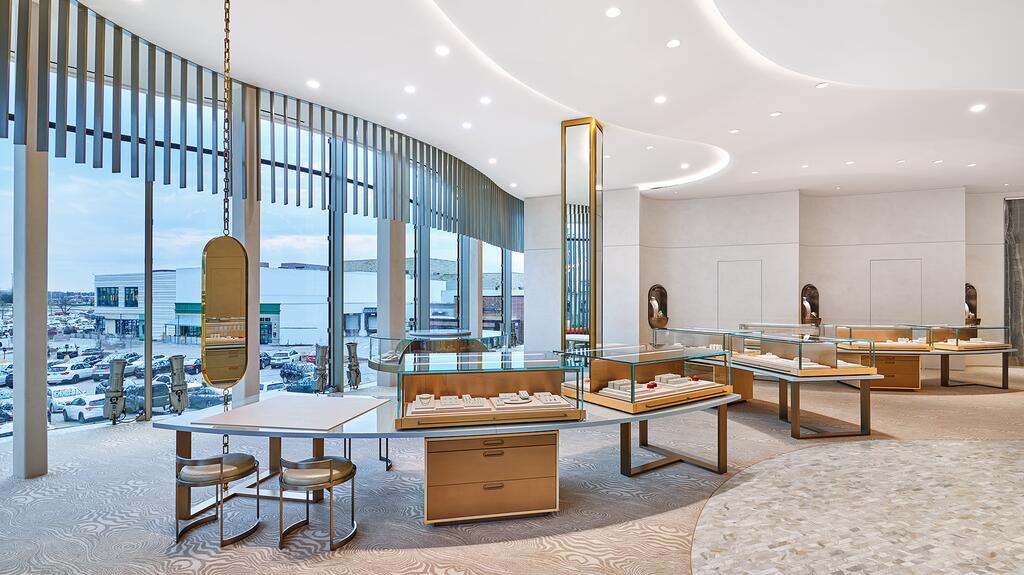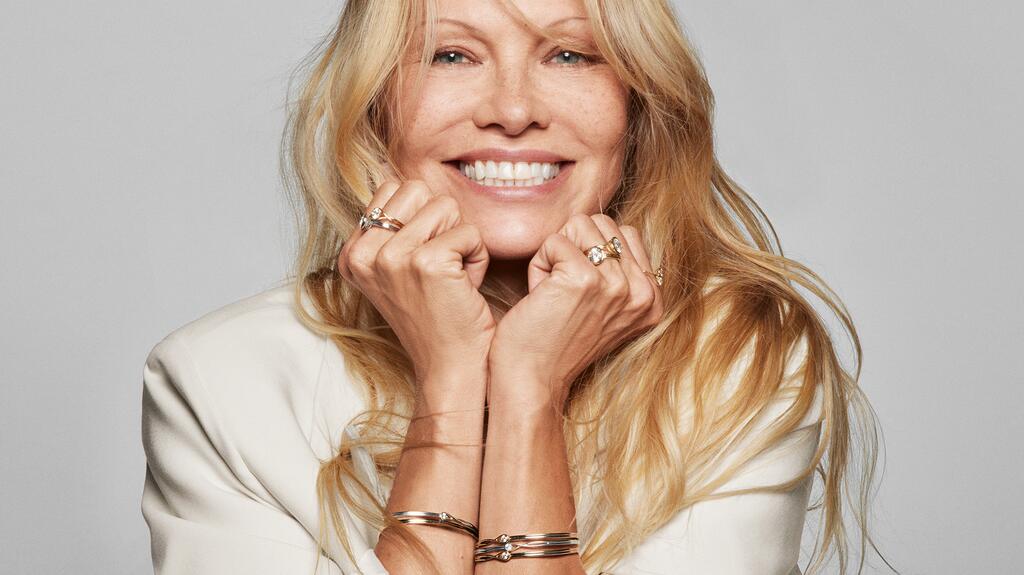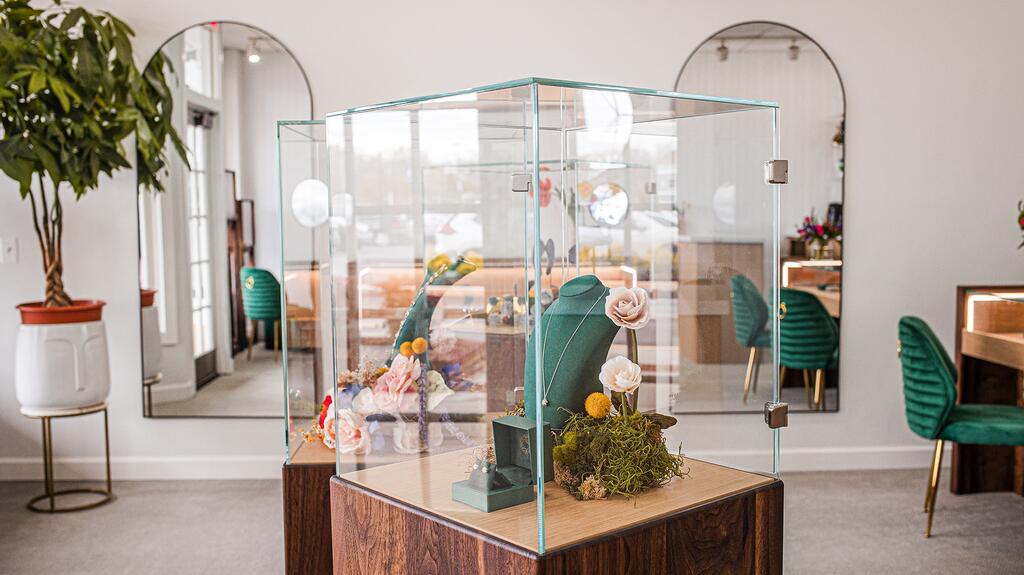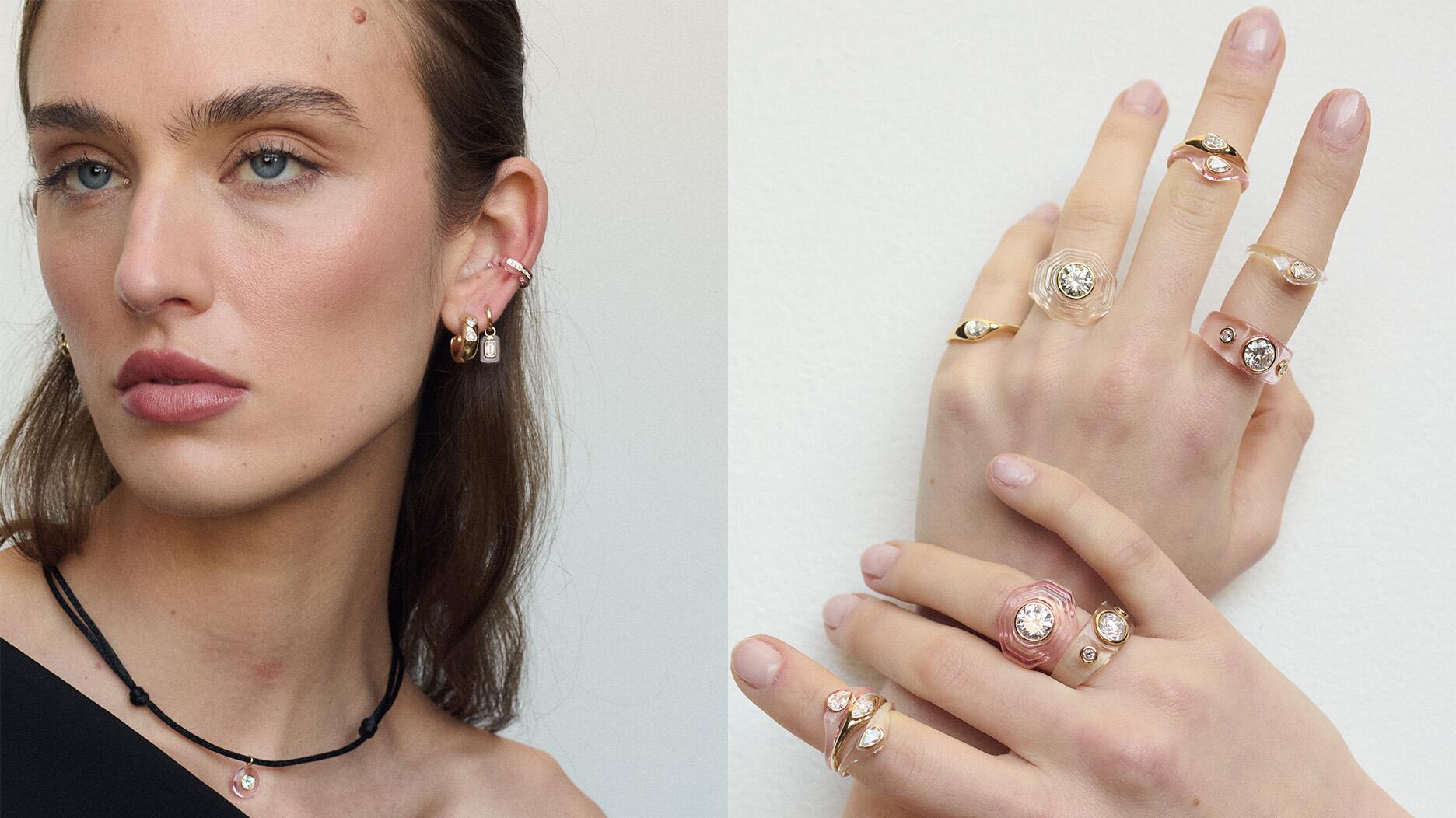State of Diamonds: What’s Next for Lab-Grown Diamonds?
While the product has entrenched itself in the market, retailers and consultants are assessing the next phase of the category’s development.

Being late to the party can be an advantage, says Constance Polamalu while relating her journey on the road to selling lab-grown diamonds.
As chief operating officer of Zachary’s Jewelers in Annapolis, Maryland, Polamalu took time during the pandemic to assess opportunities in the lab-grown market.
“Our area tends to be a bit delayed in following trends and there wasn’t a big advocate for lab grown here at the time, but it was looming,” she recalls.
“There were these hot-pocket cities like San Francisco where jewelers were disrupting the market and actively teaching consumers about their options.”
Those efforts influenced the broader shift in consumer habits that Polamalu witnessed.
Whereas consumers had once been shy about displaying wealth, the availability and affordability of lab-grown diamonds pushed them to buy larger pieces, wear them in everyday settings, and flaunt them on social media.
That spilled over in a positive way to Zachary’s natural diamond business.
The jeweler started to sell bigger pieces as consumers no longer felt it was taboo to wear them.
But it also signaled to Polamalu that people clearly were drawn to the lab-grown offering.
Meanwhile, lab-grown diamond prices were decreasing, and the trade was slowly moving away from the practice of valuing them at a discount to natural diamonds.
Given that declining value proposition, Polamalu recognized she couldn’t sell the two products side by side, since the Annapolis community strongly associates Zachary’s with natural diamond engagement rings.
“I thought, I want to try this, but as a completely separate business that’s exclusively lab grown,” says Polamalu.
She opened Bloomstone Jewelers, a store that sells only lab-grown diamonds, in April 2024.
“We saw the desire among consumers, and realized it’s going to be very hard to put the genie back in the bottle.”
No Turning Back
While lab-grown diamonds continue to spark debate around pricing, profit margins, and their position in the market, there is a consensus that the category is here to stay.
Lab-grown diamonds accounted for 14 percent of the U.S. jewelry market in 2024, according to trend analytics company Tenoris.
“Demand for lab-grown diamonds continued to soar in 2024,” Tenoris Managing Partner Edahn Golan said in January during a National Jeweler webinar outlining expectations for the jewelry market in 2025.
“However, prices are declining, and consumers are seeing them as the low-cost option.”
“There are a lot of young clients who have expressed interest in lab-grown diamonds.” — Steven Holtzman, CD Peacock
People are coming in and asking for them, added Sherry Smith, director of business development at The Edge Retail Academy, during the same webinar.
“The consumer has spoken; it’s an offering that’s not going away,” she said.
That consumer demand motivated Steven Holtzman, vice chairman of Chicago-based CD Peacock, to launch its lab-grown diamond business around 2021.
“Our goal was to go with what our customers want,” he explains. “There are a lot of young clients who have expressed interest in lab-grown diamonds.”
Ripe for Disruption
It’s a matter of giving the customer a choice, Holtzman says, highlighting the jeweler’s bridal offerings as the prime example.
CD Peacock created its own bridal collection in which it doesn’t price the product with a center stone, he explains.
It sells the setting and gives the customer options for the diamond according to their budget.
“In our initial engagement with the customer we try to get an idea of where they want to be in terms of price or spend and then we make suggestions,” Holtzman says.
Many jewelers follow this model of selling the setting and loose diamond separately, and such transactions are typically recorded as a loose diamond sale.

During the webinar, Golan reported that 45 percent of engagement rings sold in 2024 were set with lab-grown diamonds, mostly sold as loose.
Smith, meanwhile, cited similar data from The Edge that shows lab-grown diamonds made up 47 percent of units sold during the year.
Jewelers garner their highest gross margins from lab-grown diamond sales, making as much as a 70 percent margin on lab-grown loose diamonds, significantly up from the 40 percent to 50 percent margins recorded five years ago, according to Golan.
Retailer margins continue to rise as wholesale prices decline, suggesting jewelers haven’t adjusted their prices accordingly.
That makes the lab-grown diamond market ripe for disruption, says Scott Berg, president of Lee Michaels Fine Jewelry, which has chosen not to sell lab-grown diamonds at any of its 10 stores.
“We have to consider if jewelers are adding eight times value when they sell a lab-grown diamond,” he says. “Consumers will be upset when they discover how much margin the jeweler is making from them.”
It must be disrupted because there’s too much profit; the arbitrage is too big, Berg continues.
“At some point, transparency is going to happen.”
Such margins are expected to be unsustainable considering increasing supply volumes, greater levels of competition, and growing consumer awareness of lab-grown diamond price trends, De Beers Group projected in parent company Anglo American’s 2024 annual report.
Attached to Margins
Cracks are starting to show in the loose diamond model, with revenue in the category declining 7 percent in 2024 after years of double-digit growth, Golan said.
That’s largely a result of retailers having to reduce prices, albeit not by as much as wholesale prices have declined.
Jewelers are facing stiff competition from online sellers of lab-grown diamonds.
Consumers are more likely to buy something that is less expensive and less special online, as it carries less risk, said another panelist on the January webinar, Jewelers of America President and CEO David Bonaparte.
“Average lab-grown diamond retail prices do not yet fully reflect the fall in wholesale prices, so retail prices are expected to decline further.” — De Beers Group in Anglo American’s annual report for 2024
As prices continue to drop, many retailers would prefer to quit carrying lab-grown diamonds, but they can’t because they don’t want to lose the customer, Golan observed.
Lab-grown diamond wholesale and retail prices declined throughout 2024 as the product’s bifurcation from natural diamonds progresses, De Beers said in its report.
“While there are positive signs that the [negative] impact of lab-grown diamonds on demand for natural diamonds is peaking, average lab-grown diamond retail prices do not yet fully reflect the fall in wholesale prices, so retail prices are expected to decline further,” the report states.
Should margins decline, retailers might have to change their approach to the category.
Golan said jewelers are too focused on margin and should pay greater attention to ensuring revenue growth. “Cash through the register” is the real measurement and how they should be running their business, he contended during the webinar.
However, Smith argued that retailers must concentrate on gross margin because otherwise, they would have to significantly increase their sales volume to cover their operating costs.
In fact, attractive margins are the one thing keeping independents attached to lab-grown diamonds, she said.
“It’s shocking for me to look at total gross margin for lab-grown loose versus total gross margin of natural diamond loose,” she said. “That’s difficult to walk away from because at the end of the day, they need profit.”
Berg agrees with what Smith said on the webinar, noting there was never an amazing marketing campaign that made the lab-grown diamond market boom.
Rather, growth was driven by the retailer making decisions and pushing the product to their clients “based on what they thought was good for their pockets,” he says.
Memo Moves
Another factor keeping jewelers tied to lab-grown diamonds is the robust memo programs suppliers offer, which independents love, Smith said.
Retailers can take goods and hold them for as long as they like, Bonaparte noted, with the seemingly unlimited supply of lab-grown diamonds fueling the memo business in the sector.
Golan agreed, adding that the oversupply is enabling retailers to dictate terms, and even manipulate the system.
Jewelers take goods on memo, return them when prices decline, wait a few days, and pick up fresh goods at lower prices, he explained.
“This is very unhealthy,” Golan stressed. “The smart thing for [suppliers] would be to reduce their memo, especially on the lower-value items.”
Over the last year, these memo programs have shifted toward finished jewelry pieces, as opposed to loose, as growth in the lab-grown diamond segment is now being driven by sales of pendants, earrings, necklaces, and bracelets, Smith said.
Shift to Fashion?
Many see the fashion segment as the natural home of lab-grown diamonds, and North America's largest specialty jeweler, Signet Jewelers (No. 1 on this issue’s $100 Million Supersellers and Top 50 retail chains lists), amplified this message in the latter half of 2024, as it sought to reclaim the bridal segment for natural diamonds through a partnership with De Beers.
Profit from natural diamonds has been squeezed largely because they’ve been commoditized, Smith said on the webinar.
“There was a time when a diamond engagement ring was an emotional purchase and it was an emotional sale,” she said.
In a bid to counter the commoditization narrative, Signet collaborated with De Beers on a campaign to raise the profile of natural diamonds in the bridal segment, a campaign that was designed to tap into the emotions of younger consumers.
Meanwhile, Signet continues to also market lab-grown diamond engagement rings, particularly through its Zales and Kay Jewelers banners, although it is highlighting fashion as the stronger growth opportunity.
Rising demand for jewelry priced below $1,000 signals an opportunity for Signet to increase its lab-grown diamond offerings, new Signet CEO J.K. Symancyk said at the ICR Conference in mid-January.
“Lab created makes diamonds more accessible to categories of fashion that didn’t exist before,” he noted. “And that creates the phenomenon of allowing people to trade up, so it helps push average unit retail [value] up and it helps expand margins.”
Signet’s lab-grown diamond sales grew around 40 percent in the fourth quarter, he reported.

Pandora expressed similar sentiment in its 2024 earnings as its lab-grown diamond sales grew 43 percent on a like-for-like basis to DKK 315 million ($44.2 million) during the year, though it’s worth noting the category still only accounts for 1 percent of the company’s total revenue.
While the company’s global rollout of its lab-grown diamonds collections has been slower than expected, Pandora “continues to play a significant role in democratizing diamonds for consumers,” management wrote.
Boomers to Gen Z
Such “democratization” has given retailers like CD Peacock the opportunity to embrace a younger clientele it would otherwise not have access to.
“Historically, we were always on the high end and our average sale was too high, so we needed an entry-level category,” Holtzman explains. “Being able to have that choice enables us to make more dreams come true. We’ve started so many new relationships.”
Interest in lab-grown diamonds extends beyond younger consumers, stresses Polamalu.

“Percentage-wise, I have just as many 80-year-old clients over at our lab-grown store as we do here at Zachary’s,” she says.
Smith said as much during the webinar, noting that the product spans all generations and demographics.
Gen Z consumers are opting for a lab-grown diamond so they can spend less on an engagement ring, and baby boomers are saying they want 4 carats and are willing to buy lab-grown diamonds so they can have money left over to spend on something else, she explained.
Elizabeth Taylor Dreams
While consumers are attracted to the prospect of getting more for their money, jewelers are starting to realize the importance of explaining the differences between lab-grown and natural diamonds in terms of value, Bonaparte said.
When they do so, their sales of natural diamonds increase, especially in the engagement market where there is more emotion involved in the purchase, he added.
Maintaining value in the engagement ring is vital to sustaining the perception that the diamond reflects the promise inherent in a couple’s relationship, Berg says.
“If the thousand dollar per carat goes to $200, will the guy who’s buying that diamond for the woman still feel like that’s forever, that it’s meaningful enough to represent one’s wish for lifelong love?” he asks.
Polamalu sees different approaches among the bridal customers at Bloomstone, her lab-grown diamond store, than she does at the more traditional Zachary's Jewelers.
Zachary’s sees the classic bride and groom who might come in together but at some point, the woman steps out of the process to maintain the element of surprise.
For those couples, there is an “economic dance” being done and an expectation from the bride that her partner will spend a certain amount on the engagement ring because that’s what she’s worth, Polamalu explains.
For that bride, a lab-grown diamond would be considered too cheap.
“When we want to be Elizabeth Taylor, it’s going to be lab grown because we love big, beautiful diamonds.” — Constance Polamalu, Bloomstone Jewelers
Bloomstone unveiled a different mindset and sales flow in its bridal business.
“It’s the women coming in and selecting exactly what they want, and the men kind of arrive to pay the bill,” she summarizes.
That’s likely because the lab-grown diamond space is largely female driven, and Bloomstone’s marketing is targeted to women.
“Women want a 5-carat diamond to live their Elizabeth Taylor dream, but most of us can’t afford it,” Polamalu says.
“So, when we want to be Elizabeth Taylor, it’s going to be lab grown because we love big, beautiful diamonds.”
Linked and Decoupled
The separation of the products with exclusive stores and branding for lab-grown and natural diamonds enables Polamalu to address the needs of different types of customers.
Similarly, Holtzman says there is a separate area for lab-grown diamond jewelry in the new, 21,000-square-foot CD Peacock Mansion the retailer opened in Oak Brook, Illinois, in May 2024.
The separation helps to avoid confusion.
During the webinar, Bonaparte emphasized the importance of maintaining that differentiation.
The organization he heads, JA, has started providing member jewelers with educational materials to help them distinguish between the two products.
As the understanding of their respective values become clearer, Bonaparte said he expects natural diamonds to make a sustained comeback, while lab-grown diamonds will continue to decline in value and enter their own category.
It’s still uncertain how the market will evolve, according to a November 2024 report by management consulting firm McKinsey & Company, which laid out three possible scenarios for the budding dynamic.
“I’m a big believer that a high tide raises all ships, and it would be wise to respect both products.” — Constance Polamalu, Zachary’s Jewelers and Bloomstone Jewelers
Lab-grown diamonds could take over most of the market outside niche luxury segments.
Or, prices could drop so low that lab-grown diamonds will effectively become fashion accessories that no longer compete with natural diamonds.
In the third and most extreme scenario presented in the report, McKinsey said consumers, driven by low prices and an inability to tell the difference between natural and lab-grown diamonds, could lose their desire for all diamonds and no longer see them as a must-have for engagement rings.
Polamalu offers a different possibility.
Rather than compete, lab-grown and natural diamonds can bolster each other because they’re intimately linked, she contends.
“I’m a big believer that a high tide raises all ships, and it would be wise to respect both products,” she says. “They both chase the same diamond dream, so they have to be linked but also decoupled.”
The Latest

As part of the leadership transition, Sherry Smith will take on the role of vice president of coaching strategy and development.

It marks the third time the country has headed the Kimberley Process. Ghana will serve as vice chair.

The new Bulova x Stetson designs highlight two animals often associated with the American West—the bison and the Texas Longhorn.

How Jewelers of America’s 20 Under 40 are leading to ensure a brighter future for the jewelry industry.

Its residency at Yamron Jewelers will run through May 2026.


From influential executives to innovative designers, we pay tribute to the people we said goodbye to this year.

The retailer is expanding into areas with large Indian and South Asian populations.

Roseco’s 704-page catalog showcases new lab-grown diamonds, findings, tools & more—available in print or interactive digital editions.

The Italian brand has opened its first flagship amid the peaks of the Dolomites in Madonna di Campiglio, Italy.

The new curation at the Natural History Museum of Los Angeles County showcases rare gem and mineral specimens in their uncut, natural state.

The couple pleaded guilty to concealing at least $127 million in cash transactions at its precious metals businesses.

Consumers shared concerns about prices, inflation, tariffs, trade, and politics in the survey’s write-in response section.

In February 2026, the auction house will move its headquarters to the former Steinway Hall, a neoclassical landmark on Billionaires’ Row.

The new show will take place Jan. 23-25, 2026.

The former BHP Billiton leader and Gemfields chairman is remembered for his influential leadership throughout his 50-year mining career.

The LVMH-owned brand has partnered with the costume design union to revamp its award for 2026.

The luxury titan inked a deal to acquire an initial minority stake in the jewelry manufacturer with a pathway to full ownership by 2032.

The company’s curation of unsigned vintage and estate jewelry debuted at the Bloomingdale’s in Costa Mesa, California.

In the recent multi-shipment seizure, CBP also found counterfeit Audemars Piguet, Moncler, and Chrome Hearts items.

Helzberg’s Chief Retail Officer Mitch Maggart shared details about its tests of a new store concept rooted in an elevated luxury experience.

Jewelers of America execs and National Jeweler editors discuss tariffs, the sky-high gold price, and the engagement that broke the internet.

The luxury goods company said founder Ippolita Rostagno will remain at the brand’s helm.

Laura Burdese, who joined the Italian luxury brand in 2022, will take on the role in July.

The National Jeweler editors revisit the most noteworthy industry happenings and design trends from 2025.

Need a gift for the cat lover who has everything? Look no further than our latest Piece of the Week.

It purchased the “Grosse Pièce,” an ultra-complicated Audemars Piguet pocket watch from the ‘20s, for a record-breaking price at Sotheby’s.

Chandler got his start at Michelson Jewelers and has served as DCA president and CEO since 2001. He will retire at the end of the month.





























